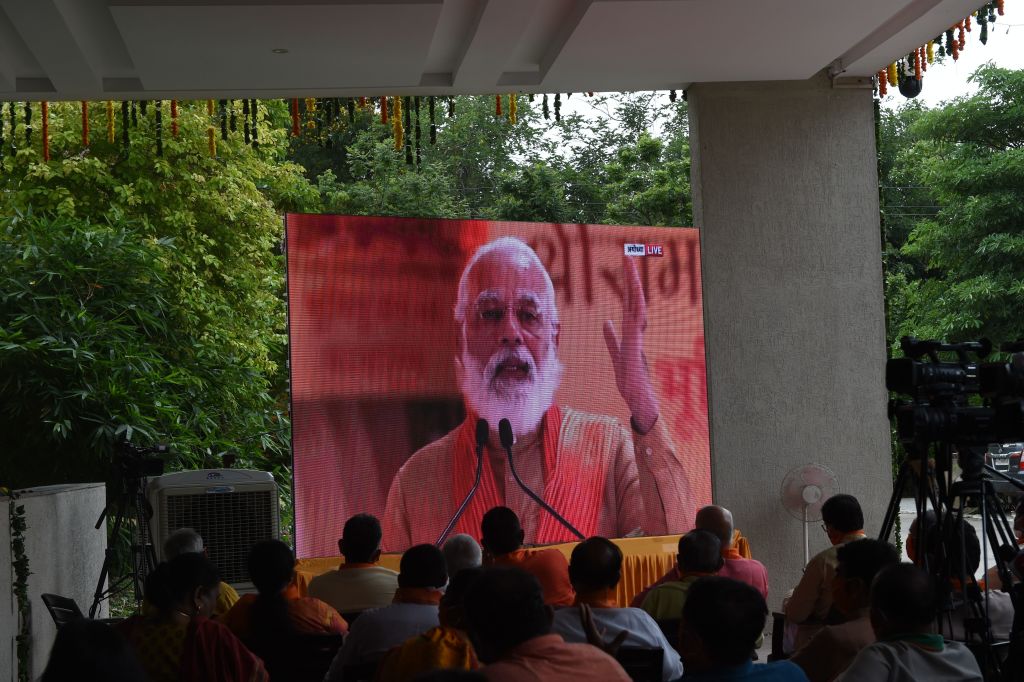
By: Pramod Kumar
INDIAN Prime Minister Narendra Modi has kicked off the construction of a Lord Ram temple in the north Indian city of Ayodhya on a spot where a mosque was demolished nearly three decades ago.
The event fulfils a long-standing promise by Modi and his Bharatiya Janata Party, and marks the first anniversary of another commitment delivered by his government, the end of special privileges for India’s only Muslim-majority state of Jammu and Kashmir.
It follows a Supreme Court verdict late last year that handed the site to India’s Hindu majority in exchange for a plot given to the Muslim community for a mosque, ending years of litigation.
Modi said the temple will help “connect the nation”.
“It will be a modern symbol of our culture, eternal faith and national spirit,” he added, highlighting that social harmony was a cornerstone of Lord Ram’s governance.
“Ram is in everyone and he belongs to everyone.”
Modi said the temple will “symbolise the power of collective resolution” of billions of people, and “will inspire the future generations”.
The call of “Jai Siyaram”, he added, was “resonating not only in the city of Lord Ram but throughout the world today”.
“I express gratitude to all citizens of this nation, Indian diaspora across the world and all the devotees of Lord Ram on today’s pious occasion,” Modi said
Many Hindus believe the god-king Ram was born on the exact spot where the mosque was built in the 16th century by Muslim Mughal rulers. In 1992, it was demolished by a Hindu mob, triggering riots that killed about 2,000 people, mostly Muslims.
Yellow flowers decorated the freshly washed area around a temple on the banks of the Sarayu River where Modi will offered prayers before heading to the construction site at noon on his first such visit since becoming prime minister in 2014.
Ahead of the foundation-stone laying ceremony of the Ram temple, Modi offered prayers at the Hanuman Garhi temple in the city.
Accompanied by Uttar Pradesh Chief Minister Yogi Adityanath, the prime minister arrived at the temple dressed in traditional dhoti-kurta.
After spending some time at the temple, he headed to ‘Shree Ram Janmabhoomi’ where he took part in puja and darshan of ‘Bhagwan Shree Ramlala Virajman’.
“Not only the mankind, the entire universe, all the birds and animals, are enthralled by this golden moment,” chanted the main priest at the ceremony.
Numerous security officials guarded Ayodhya, crowded by thousands of people, few wearing masks against the coronavirus, although social distancing measures to limit its spread will allow only about 200 to gather at the event, which was aired live on national television.
The chant of prayers resounded through the city, located about 687km (427 miles) southeast of the capital New Delhi, as devotees and monks thronged its numerous ancient temples in celebration.
Event organisers gathered soil from more than 2,000 holy spots and water from over 100 rivers for use in prayers at the start of the building work, while a Ram devotee from southern Tamil Nadu state has donated two bricks of precious metal.
Although two prominent Muslims who experienced the riots said in a gesture of reconciliation that they would attend the ceremony, an influential Muslim non-government body said the Babri Mosque “was, and will always be,” one.
“Usurpation of the land by an unjust, oppressive, shameful and majority-appeasing judgment can’t change its status,” the All-India Muslim Personal Law Board said on Twitter. “No need to be heartbroken. Situations don’t last forever.”
The site at Ayodhya and divided Kashmir have been two of the most divisive communal issues of the past 30 years in India, and Modi has attempted to draw a line under both.
For his nationalist fans, however, the moves in Ayodhya and Kashmir confirm Modi — elected to a second straight term in a landslide last year — as a decisive, visionary and heroic leader, and India’s most important in decades.